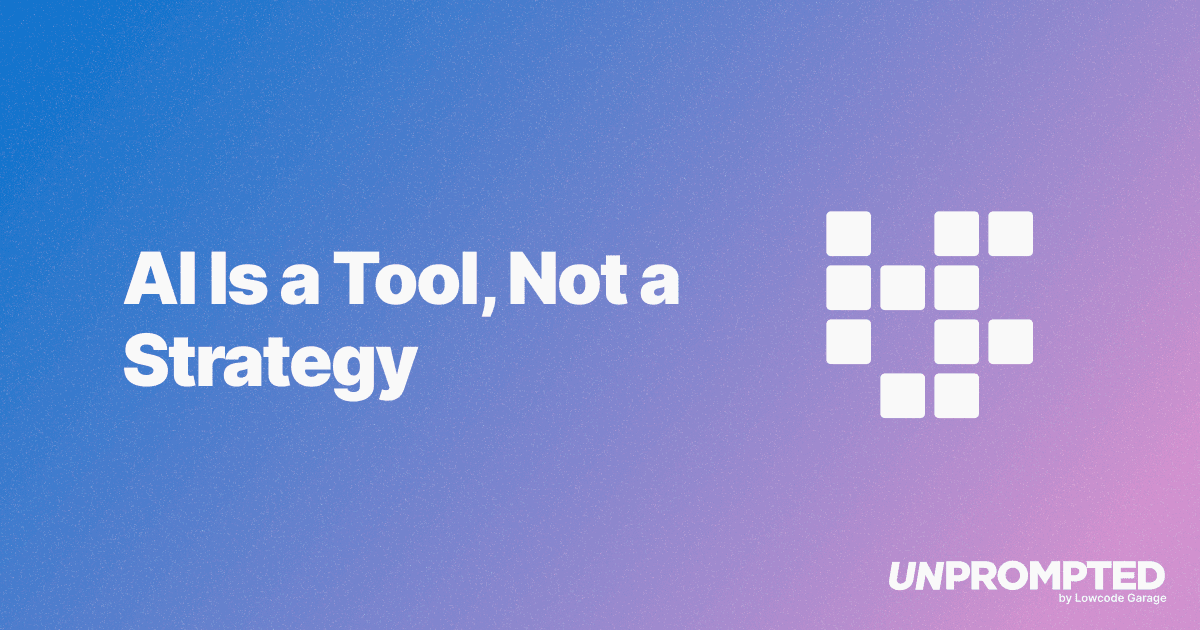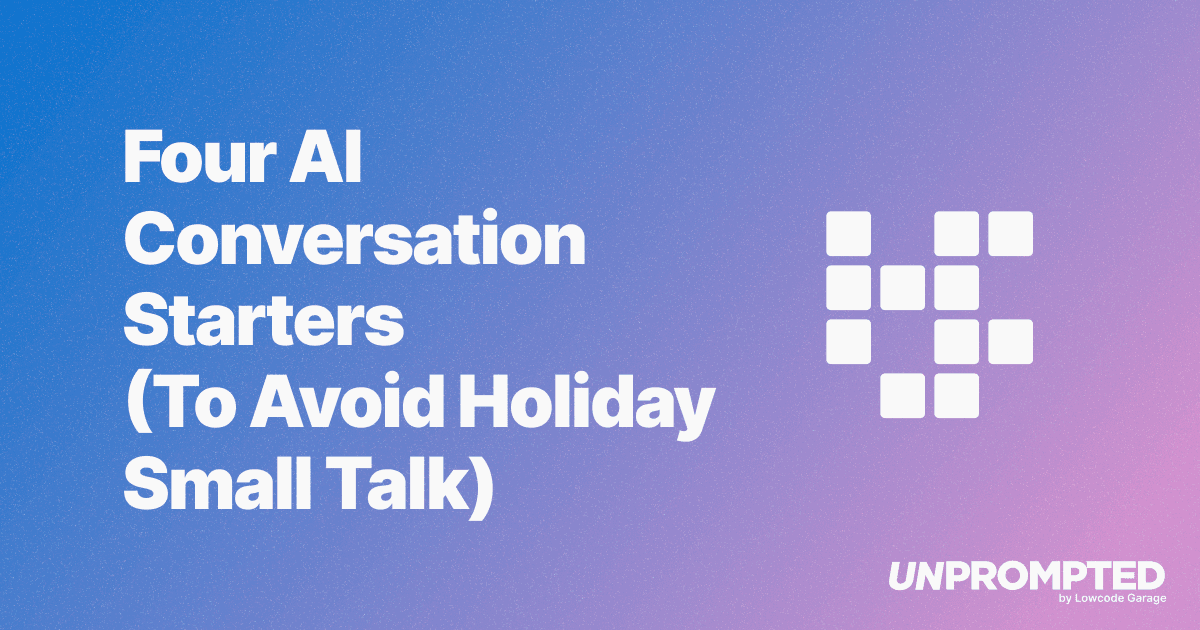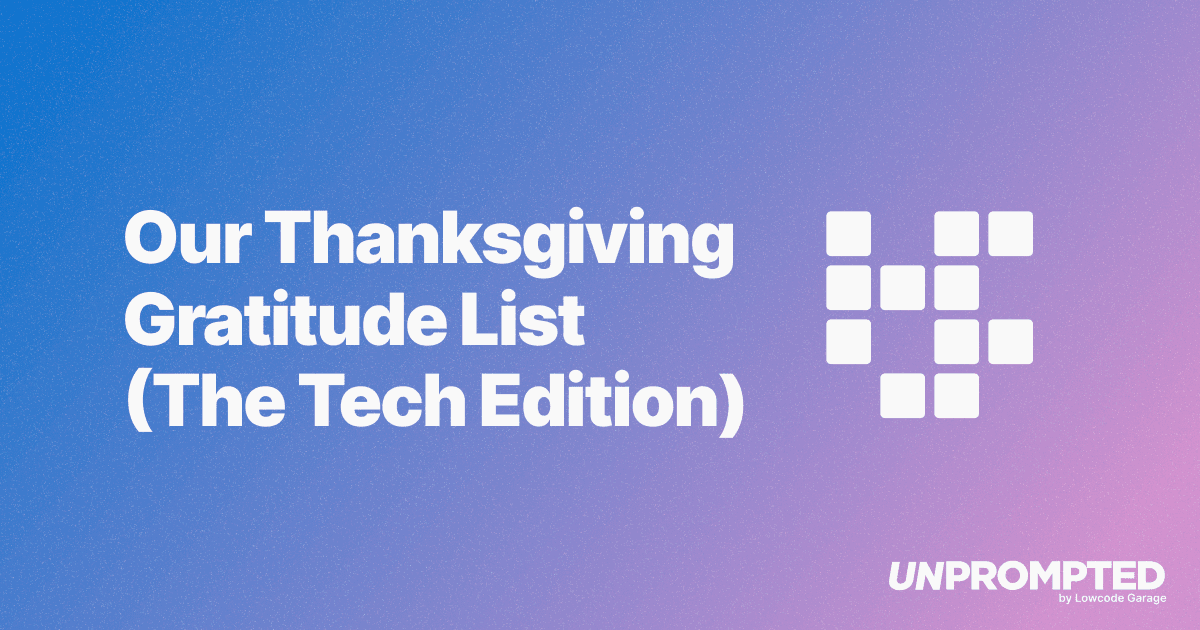Feeling Generous This Giving Season: Free AI Resources
Why nonprofits and startups share the same superpower—and how AI helps both do more with less.
Mission (Im)possible: Doing More with Less
We blinked, and suddenly it's almost November. The home stretch.
Everyone's in the same boat right now: trying to close out the year strong.
Sales teams are chasing quotas, finance teams are finalizing forecasts, and marketing teams are pushing to hit engagement goals before the clock runs out.
And for nonprofits, the stakes are really, really high. Between 24% and 47% of annual revenue for nonprofits comes in during November and December, and December 31 alone can account for 5% of yearly giving. These final weeks don't just shape the next quarter, they define the next year.
We've been working with a lot of nonprofits lately, and it's some of the most rewarding work we do. Their goals are big, their teams are small, and their impact is enormous. They're driven by purpose, but often don't have the tools or time to execute at the scale their missions deserve. They're the perfect sector to be using AI to multiply output.
Make sure to stick around until the end of the email – we've put together a free resource hub with AI tools for nonprofits and small teams.
What Nonprofits and Startups Have in Common
If you've ever built something from scratch, this will sound familiar:
- Everyone's juggling five roles
- Budgets are tight
- The goals are ambitious and the due date was yesterday

Our background in startups has translated naturally into the nonprofit world. Both demand creativity under constraint. You learn to test fast, make decisions quickly, and work smarter (because there's no other choice). There's no blending into the background of a big corporate team.
AI fits right into that way of working: it helps small, focused teams punch above their weight.
Real Examples
We recently helped a data-heavy nonprofit build a custom database that automatically aggregates and analyzes years of research using Claude Code. Now they can surface insights instantly and even turn those findings into a paid subscription product for industry partners.
Others are using AI to:
- Personalize donor outreach automatically
- Build real-time dashboards that track campaign performance
- Turn annual reports into months of content across platforms
There are so many use cases here. We could go all day, but we'll spare you.
Why This Matters (Even If You're in the For Profit World)
There's something every organization can learn from how nonprofits operate.
When you don't have endless resources, you get sharper. You make decisions faster. You focus on what actually drives results. That constraint breeds the kind of efficiency most large teams don't even realize they're missing.
Here's our (quasi) hot take. Let's call it a lukewarm take:
The more resources you have, the easier it is to waste them. The less you have, the more deliberate you become, and the better you are at getting your job done.
That's the mindset we're taking into the end of the year: focused, efficient, and eliminating the busywork.
'Tis the Season
In the spirit of giving, we put together a Resource Hub for Nonprofits full of tools, guides, and examples of how organizations are using AI to save time and raise more.
If you work with a nonprofit, share it with them.
And if you are at one, feel free to dive in—it's free, practical, and built to help you finish the year strong.
And if you don't work at a nonprofit at all? Maybe this is your reminder to support one you love before the year's up. (The tax deduction's nice, but the impact is better.)
Frequently Asked Questions
Continue Reading

AI Is a Tool, Not a Strategy
Henry Kravis reminds us that AI is a productivity tool, not a strategy. Strong management, cultural fit, and operational fundamentals still determine whether businesses succeed or fail.

Four AI Conversation Starters (To Avoid Holiday Small Talk)
Four timely AI conversation starters covering federal vs state AI regulation, Opus 4.5 capabilities, physical AI in construction, and Michael Burry's bet against Nvidia—perfect for surviving holiday small talk.

Our Thanksgiving Gratitude List (The Tech Edition)
Discover the AI tools transforming how we build products at Lowcode Garage. From publishing content with Claude Desktop to building prototypes in weeks instead of quarters, here's our Thanksgiving gratitude list for the tech that makes it all possible.